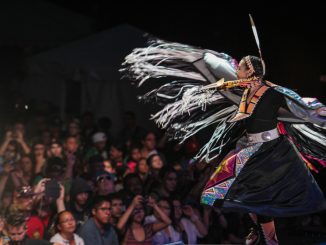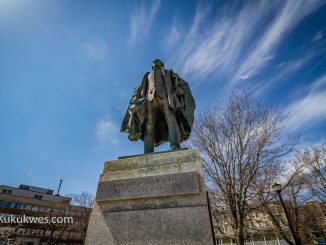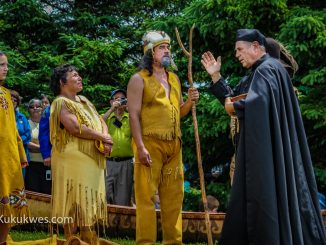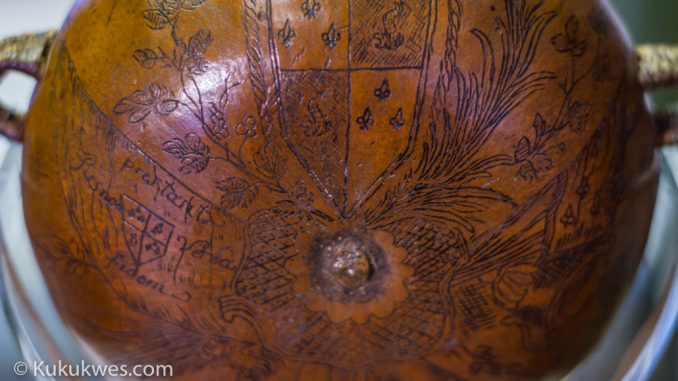
A unique piece of Mi’kmaw history is part of a new exhibit at the Nova Scotia Museum of Natural History that highlights the relationship between the Mi’kmaq and the French in Mi’kma’ki during the 17th century.
A round gourd, which used to belong to Mi’kmaq Grand Chief Henri Membertou, is on display at the museum in Halifax until October. The gourd, which was used as a water bottle, is the only known Mi’kmaw artifact that can be traced back to a known Mi’kmaw historical figure.
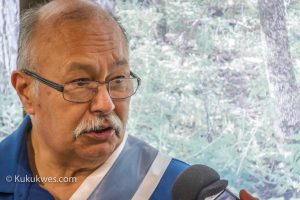
“It’s something that I didn’t know existed,” Don Julien, executive director of the Confederacy of Mainland Mi’kmaq, said following the exhibit’s opening ceremony on Wednesday.
“I know that the Mi’kmaq were baptized in 1610 (but) I didn’t know what gifts were exchanged between the Mi’kmaq and the French at the time,” he said.
“It’s wonderful that they found it and somebody took so good care of it,” Julien added.
The exhibit is called, First Peoples, First Meetings: The French in Seventeenth Century Mi’kma’ki. It officially opened Wednesday afternoon as part of National Aboriginal Day celebrations. More than 50 people gathered on the main floor of the museum for the opening reception.
Grand Chief Membertou gave gourd to godfather Charles Robin
Grand Chief Membertou was believed to be 103 when he and his immediate family members were baptized into the Catholic religion by a Jesuit priest in Port Royal in 1610. The Grand Chief passed away a year later.
Membertou gave the gourd to his godfather Charles Robin, who was a member of the Poutricourt-Champlain exhibition to Port Royal in 1604.
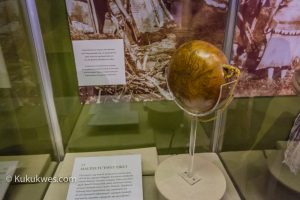
Robin, who was also the Vicomte de Coulogne, took the gourd back with him to France. The gourd remained the Robin family and was carved with the family coat of arms, depictions of family exploits and decorative motifs.
Membertou’s gourd was recently discovered at the Stewart Museum in Montreal. The Nova Scotia Museum submitted a request to display the gourd on a temporary basis.
The rest of the exhibit includes items such as furs that highlighted the trading relationship between the Mi’kmaq and the French in the 250 years prior to Confederation.
“There was no interest in displacing (the) local Indigenous population, the Mi’kmaw populations, and we see history from an economic, kind of reciprocal relationship, Roger Lewis, a curator of ethnology at the Nova Scotia Museum, explained.
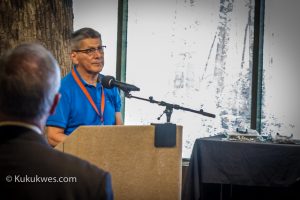
One significant component of the exhibit is that it is written entirely in the Mi’kmaw language using the Smith-Francis orthography. The French and English translations are also displayed, but only as secondary text.
“I see history being reclaimed by our people which is important today, important to our young people to have this set up here,” Lewis said.
Meanwhile, Julien said he would like to see Membertou’s gourd remain in Nova Scotia on a permanent basis.
“I think there’s a lot of significance there behind that gourd. There’s a lot of history behind it,” Julien said.
The exhibit will be on display at the museum until Oct. 1.

